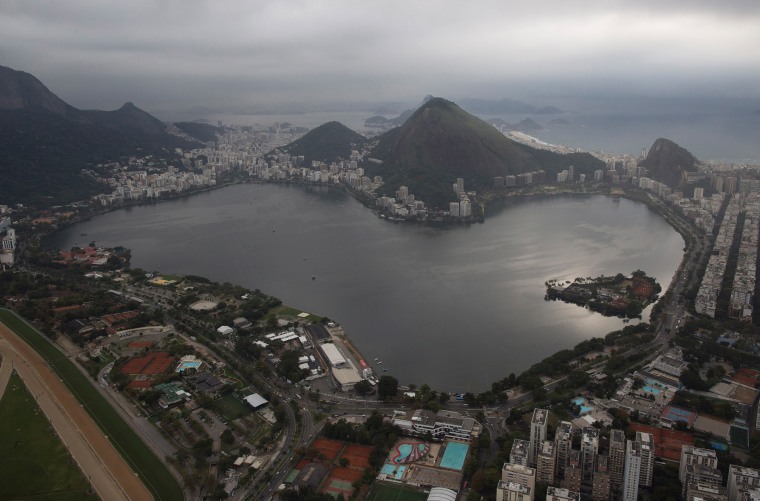Rio de Janeiro's Olympic waterways are teeming with dangerous pathogens, both far offshore and near land, where raw sewage freely seeps into them, testing by the Associated Press shows.
Waters at the host site of the 2016 Summer Olympics were first examined by the AP in July, in the first independent testing for both viruses and bacteria at competition sites. Brazilian officials and the International Olympic Committee only test for bacteria.
The July water samples revealed a shocking level of viruses and bacteria from human feces — in some cases, up to 1.7 million times what would be considered hazardous on a California beach, according to the AP.
A new round of testing shows those pathogen levels are just as bad offshore as they are close to land, meaning the sewage that flows into the waters from rivers and storm drains doesn't get diluted as it travels out to the bay or lagoon, where many athletes will compete.
Related: Athletes Will Swim in Dangerous Rio Filth, AP Investigation Finds
"We're talking about an extreme environment, where the pollution is so high that exposure is imminent and the chance of infection very likely," Kristina Mena, an expert in waterborne viruses and an associate professor of public health at the University of Texas Health Science Center at Houston, told the AP.
The results of the July tests, which experts equated to athletes competing in the viral equivalent of raw sewage, prompted promises from sports officials to do their own viral testing — especially after pre-Olympic rowing and sailing events in August led to illnesses among some athletes.
But Olympic and World Health Organization officials have not made good on those promises, according to the AP.
The latest findings are alarming because not only has there been no improvement in water quality, the water is even more contaminated that initially feared. More than a kilometer from the shore in Guanabara Bay, where sailors get soaked while racing through the water, the number of viruses is just as high as by the shorelines, closer to the sources of sewage.

"The levels of viruses are so high in these Brazilian waters that if we saw those levels here in the United States on beaches, officials would likely close those beaches," Mena said.
The WHO on Wednesday said it had no comment on the latest findings. In a statement, the Rio 2016 Olympic organizing committee said "the health and safety of athletes is always a top priority and there is no doubt that water within the field of play meets the relevant standards."
"Rio 2016 follows the expert advice of the World Health Organization, whose guidelines for Safe Recreational Water Environments recommend classifying water through a regular program of microbial water quality testing," it said.
But the WHO says Brazil, like almost all countries, only needs to test for bacterial "markers" of pollution.
Many scientists in the U.S. and Europe argue that studies show there's no correlation between bacterial pathogens, which break down in salty and sunny conditions like in tropical Brazil, and viruses, which can last for months — or in some cases years.
That was the case in AP's testing in Rio: The water often falls within safe levels of fecal bacteria, but viral loads were off the charts.
Athletes who ingest just three teaspoons of water have a 99 percent chance of being infected by viruses, the AP says.
Competitors who have fallen ill have reported fevers, stomach problems, and skin infections.
The Summer Games will attract more than 10,000 athletes, representing 205 nations. Nearly 1,400 of them will be sailing, swimming, canoeing and rowing in Rio.
Last year, the mayor of Rio told NBC News pollution was a big problem, but he vowed the city would be Olympics-ready by 2016.
"I can guarantee these games will be ready on time. One hundred percent. And I can guarantee you, that this is going to be the greatest legacy in Olympics history," Eduardo Paes told NBC News.
